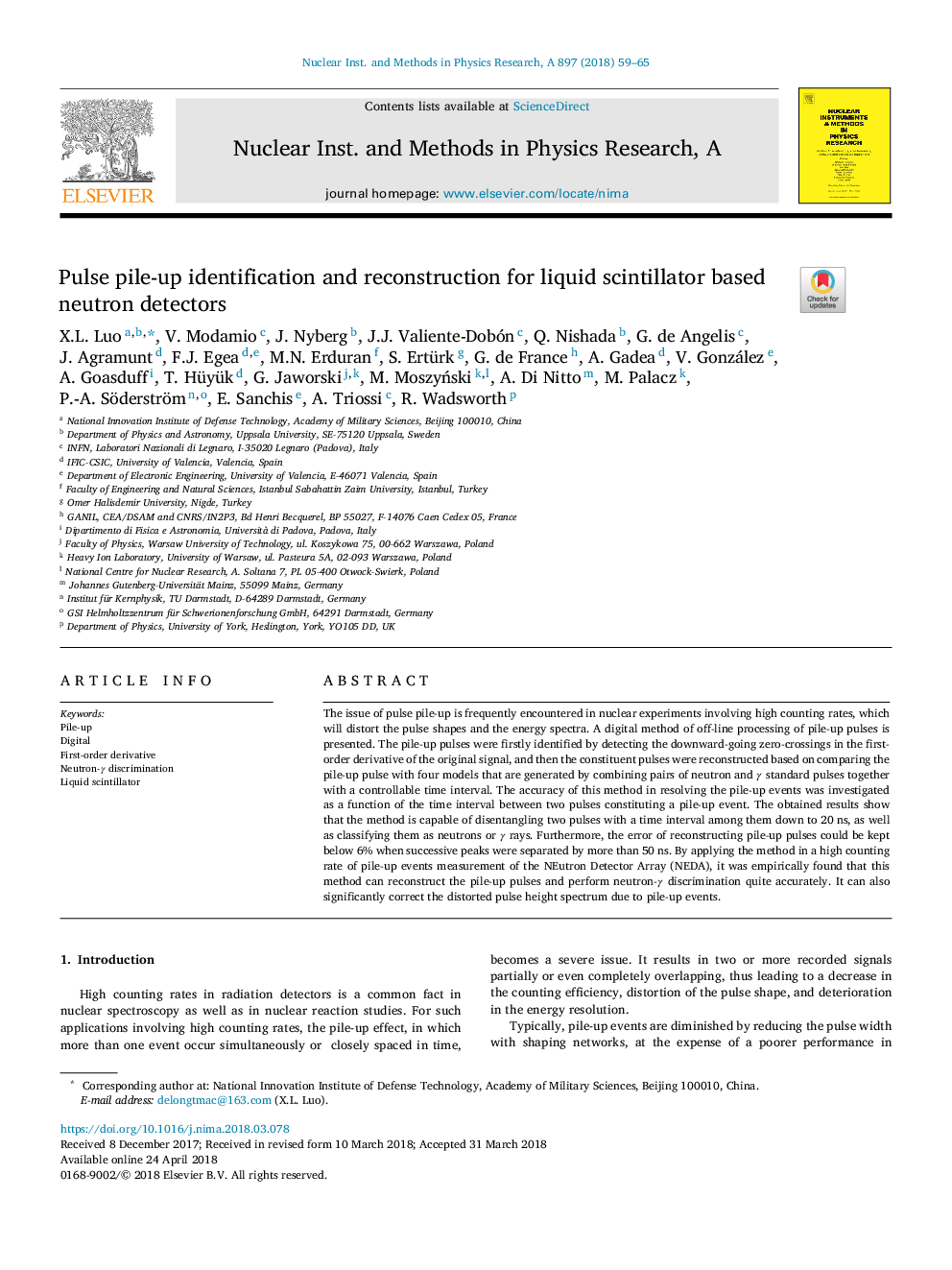| Article ID | Journal | Published Year | Pages | File Type |
|---|---|---|---|---|
| 8166188 | Nuclear Instruments and Methods in Physics Research Section A: Accelerators, Spectrometers, Detectors and Associated Equipment | 2018 | 7 Pages |
Abstract
The issue of pulse pile-up is frequently encountered in nuclear experiments involving high counting rates, which will distort the pulse shapes and the energy spectra. A digital method of off-line processing of pile-up pulses is presented. The pile-up pulses were firstly identified by detecting the downward-going zero-crossings in the first-order derivative of the original signal, and then the constituent pulses were reconstructed based on comparing the pile-up pulse with four models that are generated by combining pairs of neutron and γ standard pulses together with a controllable time interval. The accuracy of this method in resolving the pile-up events was investigated as a function of the time interval between two pulses constituting a pile-up event. The obtained results show that the method is capable of disentangling two pulses with a time interval among them down to 20 ns, as well as classifying them as neutrons or γ rays. Furthermore, the error of reconstructing pile-up pulses could be kept below 6% when successive peaks were separated by more than 50 ns. By applying the method in a high counting rate of pile-up events measurement of the NEutron Detector Array (NEDA), it was empirically found that this method can reconstruct the pile-up pulses and perform neutron-γ discrimination quite accurately. It can also significantly correct the distorted pulse height spectrum due to pile-up events.
Related Topics
Physical Sciences and Engineering
Physics and Astronomy
Instrumentation
Authors
X.L. Luo, V. Modamio, J. Nyberg, J.J. Valiente-Dobón, Q. Nishada, G. de Angelis, J. Agramunt, F.J. Egea, M.N. Erduran, S. Ertürk, G. de France, A. Gadea, V. González, A. Goasduff, T. Hüyük, G. Jaworski, M. MoszyÅski, A. Di Nitto, R. Wadsworth,
